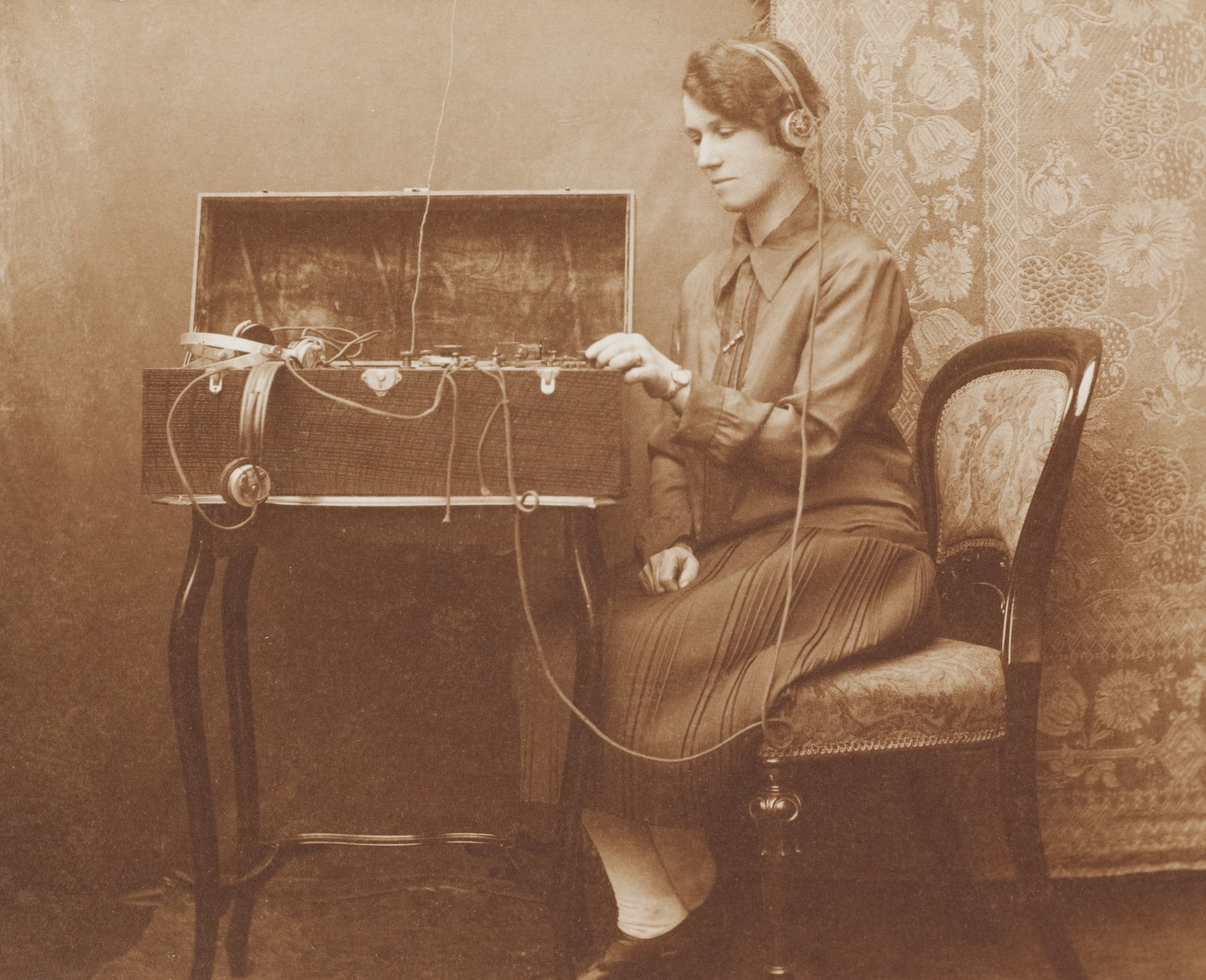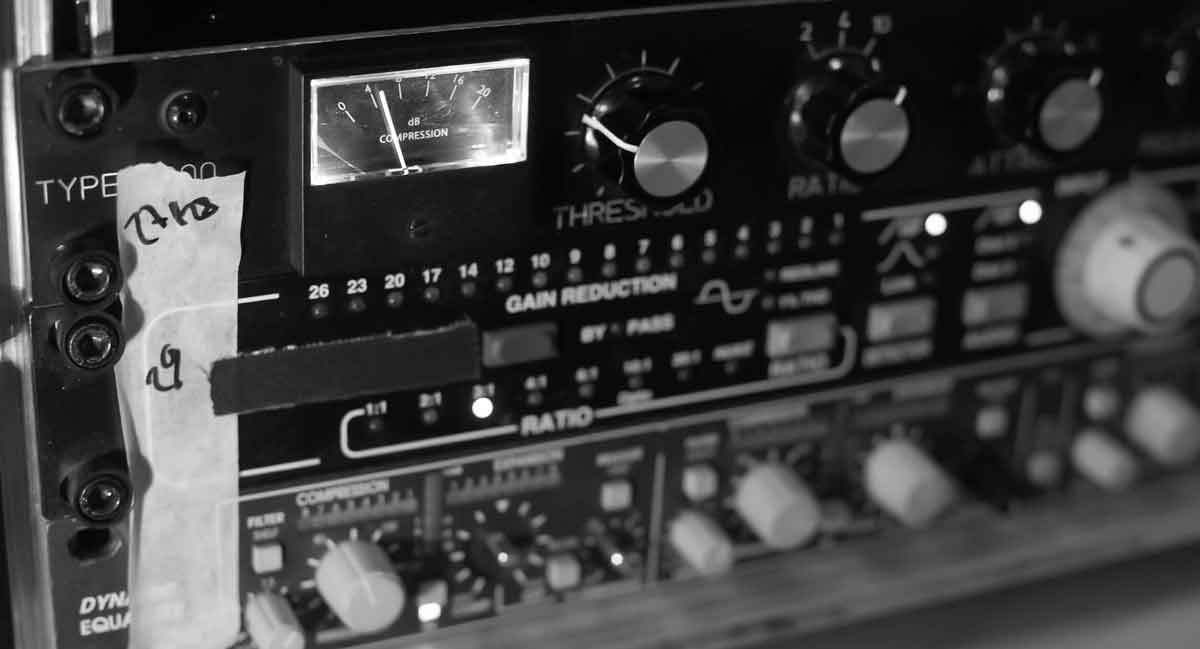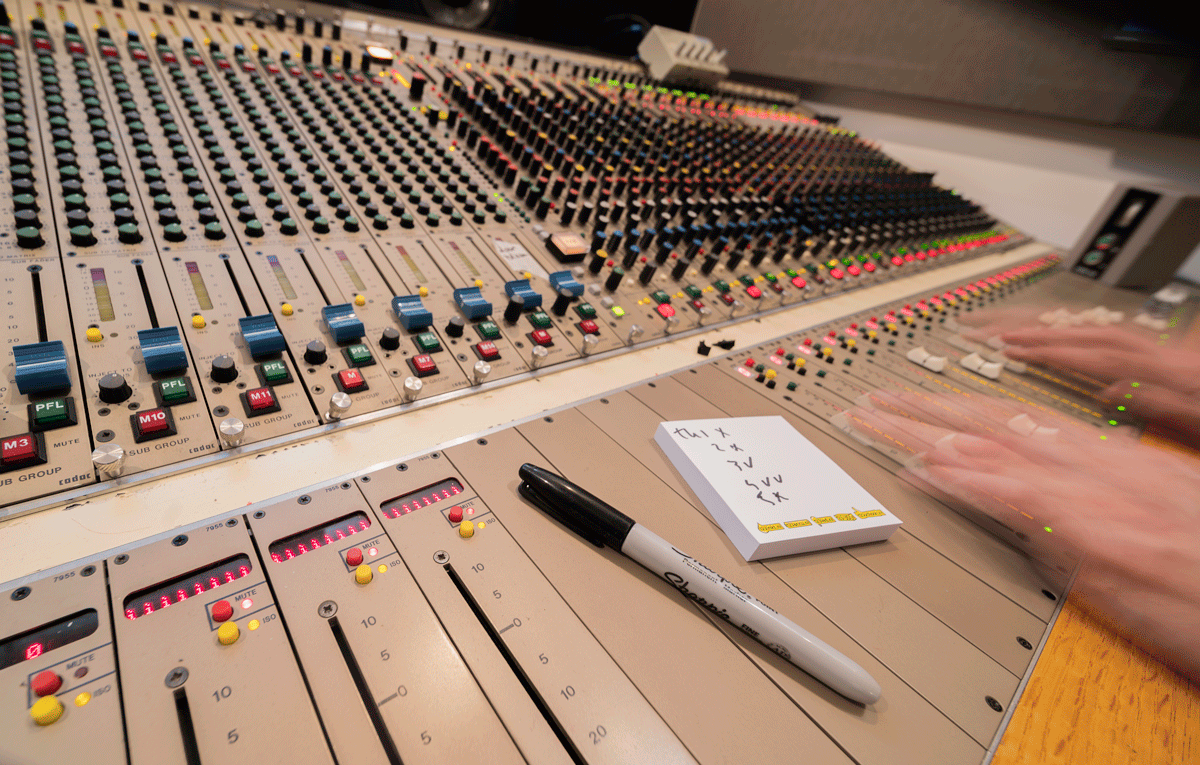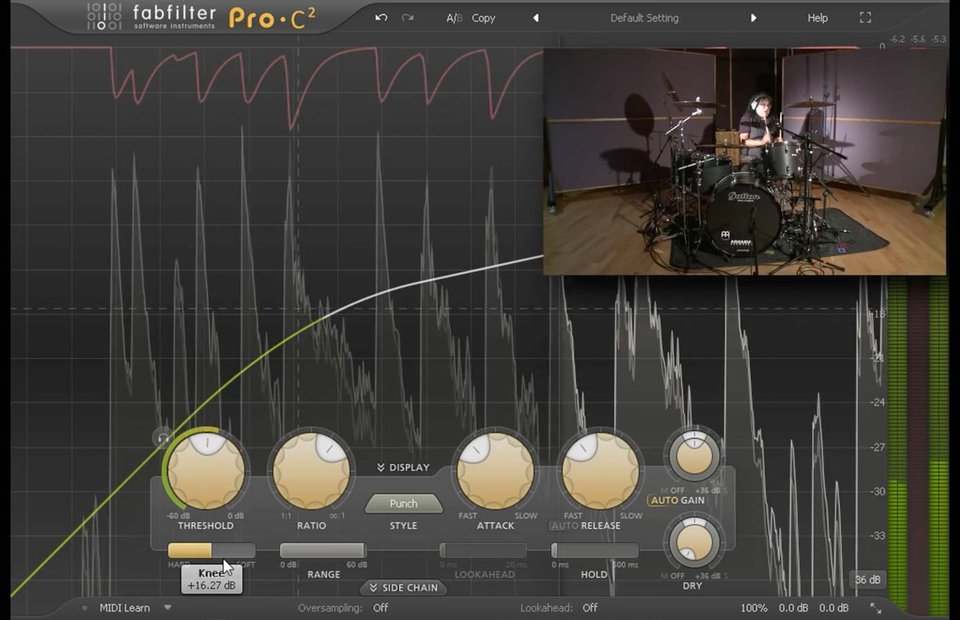Compressors and limiters were originally developed as tools to prevent overmodulation in radio broadcasting. Transmitting music via a radio signal is done by converting an electrical current into a modulating sine wave. The irregularities are decoded by a radio receiver which turns the signal back into an electrical current and then into the relevant broadcast material. If the signal is too loud, overmodulation occurs and the audio will badly distort.

Shortly after the introduction of compressors/limiters to the broadcast world they found their way into recording studios for music production. In the early sixties, manipulating dynamics with a compressor/limiter would not have been thought of as a crucial part of a great mix. Without a rack full of compressors on hand, engineers were forced to solve dynamics problems in other ways, either at the microphone stage or in the performance/arrangement. Most studios back then had only one or two compressors at their disposal and in many cases these were used only in the last stages of completing a production. The compressor was either used to control the overall dynamics of a song or control a lead instrument (e.g. a vocal track).
With today's digital recording environment and signal processing capabilities we are no longer bound to costly and bulky hardware compressors and can use almost as many compressors in a session as we'd like. The modern day compressor/limiter is no longer solely used to manipulate dynamics, but often to shape the character of a sound as well.
Understanding when and how to use a compressor is absolutely crucial for a modern mixing engineer. If you don't know why you're using a compressor and what sound you're aiming for, tweaking this device usually does more harm than good.
Before we look at the individual controls (see Basic compressor controls), let's look at the three most common reasons to utilize this versatile tool in your tracks.

When to use a compressor?
There are three common reasons to add compression to a track or mix:
- To control the dynamic range of an instrument, group of instruments or entire mix
- To alter the timbre of an instrument or group of instruments
- As a special effect
As a general rule it is good to concentrate on the overall balance of your mix before adding any compression at all. If your overall balance is in check you will be able to hear the effects of the compressor more clearly.
Controlling dynamic range
A recorded piece of music often has sections that are played with different intensities, resulting in volume differences across the sections of a song. Since dynamics are a crucial part of the story the artist tries to tell, we want to preserve these dynamics as much as possible. However, when volume differences on individual tracks or sections are too big, these volume jumps can become very distracting and shift the listener's focus away from the story the artist is trying to tell. As a result, a static fader balance often doesn't work for an entire track and will cause certain events to be either too soft, or too loud.
Before the use of compression, these problems could only be addressed by either adjusting the performance/arrangement, changing the microphone setup, or manipulating the faders on a mixing console. Since fader control was done live by the mixing engineers themselves, storing these changes meant recording them to another tape. For elaborate productions it was not uncommon to do a final mixdown with a couple of people at the mixing board to control multiple faders at the same time. In modern studios and DAWs we have automation to help solve this problem. However, while fader automation is great for changing the impact over the course of several measures, it still doesn't work very well for micro dynamics (e.g the attack or sustain of an individual note). This is where compression helps. At its core, a compressor is nothing more than an automatic volume control that can react far more precisely and quickly than manipulating a fader.

When you’re using a compressor purely as a tool to fix a problem it's good practice to delay applying compression until you find a track that you can’t find a suitable (static) fader level for. This is where you may need to compress. As an example, let’s think about a lead vocal where some notes lack a bit of level. When you find a balance that works for the majority of the song, the softer, more delicate notes tend to be overpowered by other instruments. If you find a balance that will expose the words more clearly, louder notes will be way too loud. In other words, the dynamic range is too big and a static fader position won’t work. If automation doesn’t work because the level differences occur too quickly, compression is your next best option. It works the same way for every instrument that requires consistency. For example, a drummer often doesn’t hit the drums with the same intensity throughout a whole section of a song and a bass guitar often has certain notes that are louder than others. A compressor is a great tool to help you achieve more consistency in both cases.
Changing tonal character
When the compressor found its way into recording studios it quickly became apparent that it could also be used for purposes other than controlling the overall dynamics of a signal. For some instruments, compressors allow us to modify the amplitude envelope of a sound in a way that makes it seem punchy, intimate or larger than life. For example, consider the way that a drum set sounds in a room, acoustically. The amplitude envelope exhibits a pretty dramatic attack and decay phases, relative to the level of sustain and release. When we compress the drums, we can change the ratio of the loud part of the note (the attack/decay) vs. the quiet part (the sustain/release). As we change this relationship we may hear more of the low level details of the drum set or even the excitation of the acoustic space it is in. These are sounds we usually don't hear unless the drums are really close to us, or are performing at a high dynamic. As such, their presence can be a subliminal cue that things are really intimate or exciting. When used this way, a compressor becomes closer to a sound preparation tool than a mixing tool, and isn't so different from a musician choosing different gauge strings for their guitar or putting some tape on a drum head.
As compressors became more prevalent in studios, engineers found that certain compressors/limiters altered the sound even with very little or no gain reduction applied. You might hear engineers referring to certain types of compressors as adding a specific color to a sound. For instance, some compressor designs may alter the sonic characteristics due to their circuitry, perhaps adding slight saturation or distortion due to the use of tubes or transformers. Another reason might be unique attack and release characteristics due to a particular compression topology. Of course, it can also be a combination of both.
Nowadays, compressors are used both as tools for controlling dynamics as well as altering the tonal characteristics of a sound. In many modern day productions, people reach for compressors to make something sound punchy. However, when you overuse the compressor's higher ratios and shorter attack and release times it can result in the exact opposite; a dry, fatiguing or lifeless mix.
For some instruments, compressors allow us to modify the sound in a way that makes it seem punchy, intimate or larger than life. By changing the amplitude envelope we are able to expose low level details of an instrument or even the excitation of the acoustic space it is in.
Compression as a special effect
Compression can also be used as a special effect to shape or change the feel of an individual track or entire arrangement. For example, side-chain compression is a cornerstone technique for producers in a wide variety of genres, particularly dance music. To learn more about side chain compression, please read Side chain compression or check out this great video tutorial:
Looking for a great allround compressor? Try FabFilter Pro-C 2! It has tons of different compression styles, and with its visual gain change display, it's a great learning tool as well.

